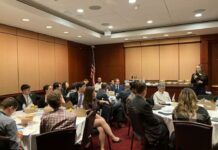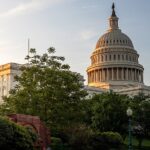No time to lose: Federal rule ready to boost awareness of transportation emissions
Comments close tomorrow 10/13 on a greenhouse gas emissions rule that could reestablish sunlight and accountability for transportation’s impact on climate change. Here’s what’s...
Transit’s physical cliff: Climate change
California and New York State Legislatures voted to save transit from the fiscal cliff in 2023. While a win for transit can be a...
Inverting the IIJA’s double standard
The IIJA and IRA are hailed as landmark pieces of climate legislation. Unfortunately, by prioritizing the status quo of flexibility and formula status for...
Transportation for America Applauds Long-awaited USDOT GHG Rule
The GHG emissions measure will require U.S. states and territories to measure and report transportation-related emissions on federal roadways.
WASHINGTON, D.C. (Nov. 27) — Last...
Takeaways from the Smart Growth Electrification Roundtable
On January 23, 2024, Transportation for America, in partnership with the Bicameral Electrification Caucus, organized a roundtable discussion on Capitol Hill on the vital...













